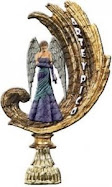New York Times, Nov. 17, 2008–Montana campground.
Clint Kyhl, a Forest Service employee working out of Laramie, Wyoming directs an “incident management team” that focuses on managing fire threat in dead forests. Dead forests? Yes. Because more and more, up and down the Rockies, that’s what we’ve got: dead forests.
I don’t need a newspaper to show me this; I can see it when I look at the foothills of the Hyalite Mountains just south of Bozeman, and when I go skiing in the Bridgers to the north.
One beetle. NY Times, Nov. 17, 2008
If you round up all the usual suspects, you’ll only have one: the mountain pine beetle (Dendroctonus ponderosae Hopkins) an insect about the size of a grain of rice that appears to have laid a diabolically clever plan (along with millions of eggs). In the late summer adult females leave the trees they’ve killed over the summer and go searching for new victims, preferably mature, healthy pines. A female who finds a likely-looking tree bores into the bark and then releases pheromones which attract both males (potential mates) and more females, which release more pheromones, which results in a mass attack on the tree, which is one reason why the tree’s defenses can be overwhelmed.
Last spring I wrote about pine beetles but I focused on British Columbia, where the situation is worst. Three days ago (Nov. 20), the New York Times ran a story on the infestation here in the United States. It included Mr. Kyhl’s estimate that within three to five years, “virtually all of Colorado’s lodgepole pine trees over five inches in diameter will be lost, about five million acres.”
Blue stained trunk; Colorado State U. Ext.
The beetles do all the normal things, all of them under the bark: they mate, they tunnel, they lay eggs, and the eggs, all too often, hatch. All that happens in the fall. The larvae spend the winter in their tunnels, snuggled down into the frass (a mixture of sawdust and excrement) with which their beetley parents so thoughtfully lined their living quarters. Come spring, the larvae get down to business eating the layer of wood under the bark (the phloem) which carries nutrients to the foliage above. As just about everyone knows, all you have to do to kill a tree is to “girdle” it: damage or kill that nutrient-carrying layer all the way around the tree, and the tree will die. Enough larvae munching away under the bark of one tree can girdle it, and voila: one dead tree.
Pine beetle in sap; Colorado State U. Ext.
But it turns out that the beetles don’t operate strictly alone. When the adults colonize a new tree, they often carry with them the spore of Ophiostoma minus, better known as blue stain fungus. This charmer inhibits the flow of sap, and sap is, guess what, necessary to the tree. It’s also the tree’s main defense against the beetle, since a beetle swimming in sap is a stuck bug.
There are always a certain number of beetles around, so why have we suddenly got a crisis? Why are most of the forests throughout the west probably doomed? As usual, there’s more than one reason.
Drought: Drought weakens trees, leaving them more vulnerable to any onslaught. And guess what: most of the west has been drought-stricken for years. But drought plays a more specific role in relation to pine beetles. Since the tree’s primary defense against the beetle is sap, and drought decreases sap-flow, drought reduces the tree’s ability to fend off early invaders.
Warm winters: Extended periods of extreme cold—thirty or forty below for weeks at a time—used to be the norm in the high Rockies. Such spells kill many of the larvae, keeping the beetles in check. But such winters are now a thing of the past, which is why the beetles have proliferated and the forests are dying.
So though the direct, the immediate, the proximate cause is the beetle and its attendant fungus, the larger, indirect, more fundamental cause is—you guessed it—global warming.

 Subscribe to RSS feed
Subscribe to RSS feed



When I was a kid back in the 70s we had a large infestation of the pine beetle in mountains of Colorado. My mother didn’t use toxic sprays or such on her garden. But when the pine beetles arrived she broke with that. We used to cut the dying trees down before the larva grew up. We would search for trees that didn’t look healthy and look for the holes the beetles dug. They were easy to spot since the tree tried to flush the beetles out with sap and the sap would dry outside the hole. Then the trees would be cut down and hauled into a pile, doused with pesticide and tightly covered in plastic. It was a butt load of work but her mountain side didn’t die off like some around us. Pine beetles are so nasty. Luckily on the Ponderosa Pines were susceptible in our area. Unfortunately that is the predominate tree in the area.
The only nice thing about the beetles is they make the most beautiful wood (hey got to find the silver lining where you can). The wood is streaked with blue. The loggers would come out and cut the dead trees down and turn it into lumber. Some in the area would use it on the walls inside their home. Very pretty, but I wouldn’t want the grim reminder on my walls.
In Alberta, we have so far been fortunate that the Rocky Mountains form a natural barrier to help slow the spread of the pine beetle from British Columbia. There have been some small incursions, but last winter some of those areas had some -40C weather for a few days that beat them back a bit. Without the cold temperatures, they will spread quickly through Alberta too.
I don’t want to sound fatalistic, but I figure that we’ll ultimately see a stop. Either we’re going to see a pine that’s completely immune to the fungus, or we’re going to see hunting wasps evolving to parasitize the beetles. The only problem with this little prediction is that we can’t be absolutely sure, and even when it does happen, we may be waiting anywhere from hundreds to thousands of years for everything to return to “normal.” That’s, of course, implying that the beetles don’t keep working until they’ve killed off all suitable tree species and a new variety moves in to fill the open niche.
(By the way, if you want to get a whole new appreciation for wasps as a biological control, pick up a copy of The Hunting Wasp by John Crompton. It originally saw print in the Fifties, but it’s still a remarkably accurate book. It’s also the book that made me stop freaking out whenever I’d see a wasp, allergy or no, and start encouraging the various species to stick around my garden. These days, I don’t spray or harangue my wasps, and I have a much smaller issue with webworms and other caterpillars because of it.
I think those pine trees need neem oil protection! Kills their appetite and libido. No more larvae.
So sorry it took me a while to respond to your “fave” on blotanical. We were in the process of moving when the message came, and I’ve been somewhat preoccupied lately. Thank you! I enjoyed this post about the pine beetles. Interesting information, and I learned a new word: frass. I agree with you that the climate is changing. It always does follow a cyclical pattern. Even before there were meteorologists and climatologists helping us understand the bigger picture, artists and writers were depicting it in their work. If you read Renaissance and Early Modern lit, you will find many references to the mini ice age that was plaguing most of the northern hemisphere at that time.
Daphne, that is fascinating. (Maybe you could post about it?) Cutting down the infected trees is indeed one of the few ways to slow the infestation. I’ve never before heard about a single-family response like this though–much less one that’s successful.
NorthernShade, I’d read that the wee beesties had leapt the Divide; so glad to hear they’ve had a set-back. Good luck–
Texas,these forests will be gone within a decade, not a hundred years or a thousand. And that’s not fatalistic; it’s just facing facts. As for “returning to normal”–I’m not sure what that means, any more.
Interesting about the wasps. Yes, they do lots of good stuff–even by our standards. Yellow jackets, however, I can live without.
Sunita, I wonder if this has been tried? I’ll look into it. If it worked, it would be fantastic, both for the forests of the US and the neem-producing countries like India. (Unless, that is, people started cutting down everything to plant neem plantations. Which they probably would. Encouraged by US companies, no doubt. Ack!)
walk2write, no worries. I just made a hash of my response over at Blotanical, so I’ll thank you here.
Cyclical patterns certainly play a role in global warming, but I think it’s clear by now that human activity also plays a major part in the recent weather patterns. It’s one of the things most climatologists now seem to agree on.
–Kate
Global warming may or may not exist. It may be impacted to some external degree, perhaps by human’s in some way, we just don’t no. It may be, and likely is, just the natural rhythm of the planet over millenia. We shouldn’t be in a rush to just stop everything we’re doing, which is why President Bush is passing many “drill baby drill” laws for the benefit of corrupt, nearsighted corporations. I mean, he’s passing an economic stimulus package by beeing an asshole on his way out. I mean, he’s burning the furniture, taking the silverware and drapes, and pissing on the walls. Wait. I was supposed to NOT be opinionated until the very end of my little silly comment.
I can testify to the damage the beetles have caused in Colorado. Sadly, they are now making their way down the mountains and onto the plains. My neighbor just had to cut down a dead pine tree thanks to the beetles. I regularly inspect the one & only pine planted in my yard but I think I need to start treating it. I wonder what the new “normal” will be when all the pines are gone too…
Benjamin, you’re losing your touch. I thought you were serious. Or at least, seriously deranged.
Kathleen Good luck Kathleen. Having one alone is actually some sort of protection in itself.
–Kate